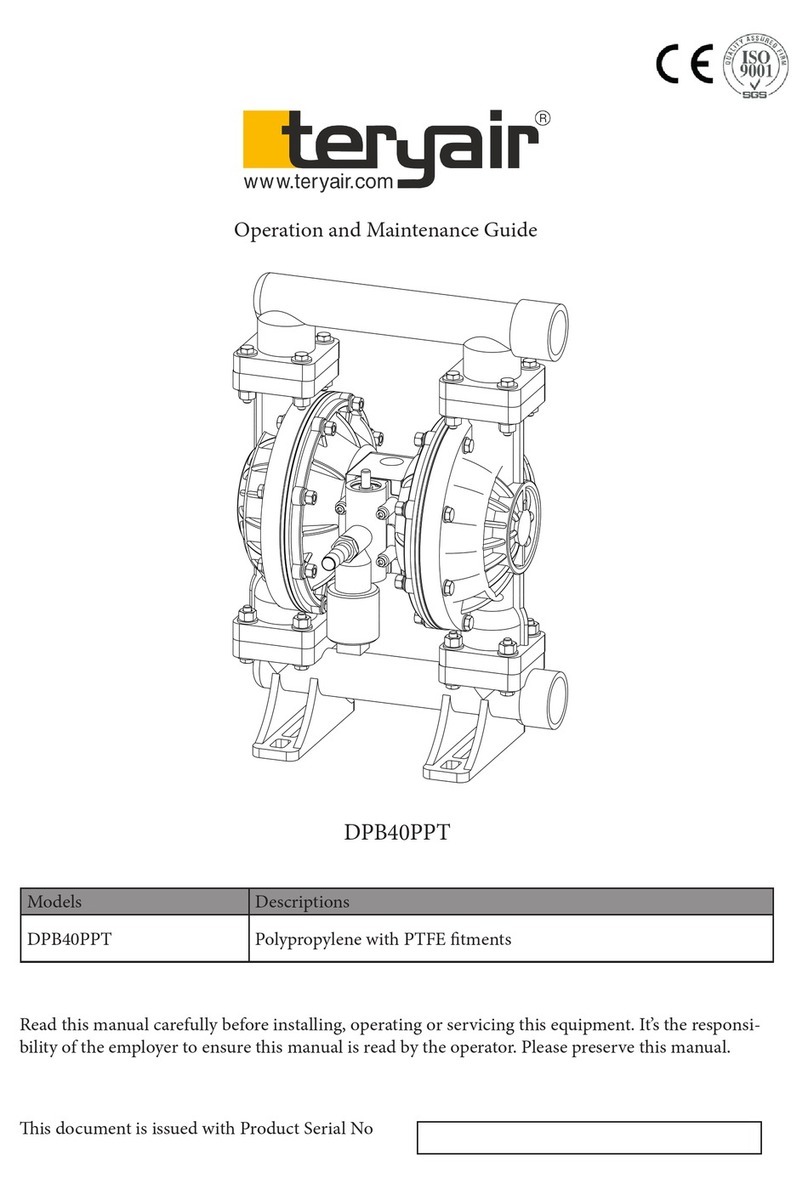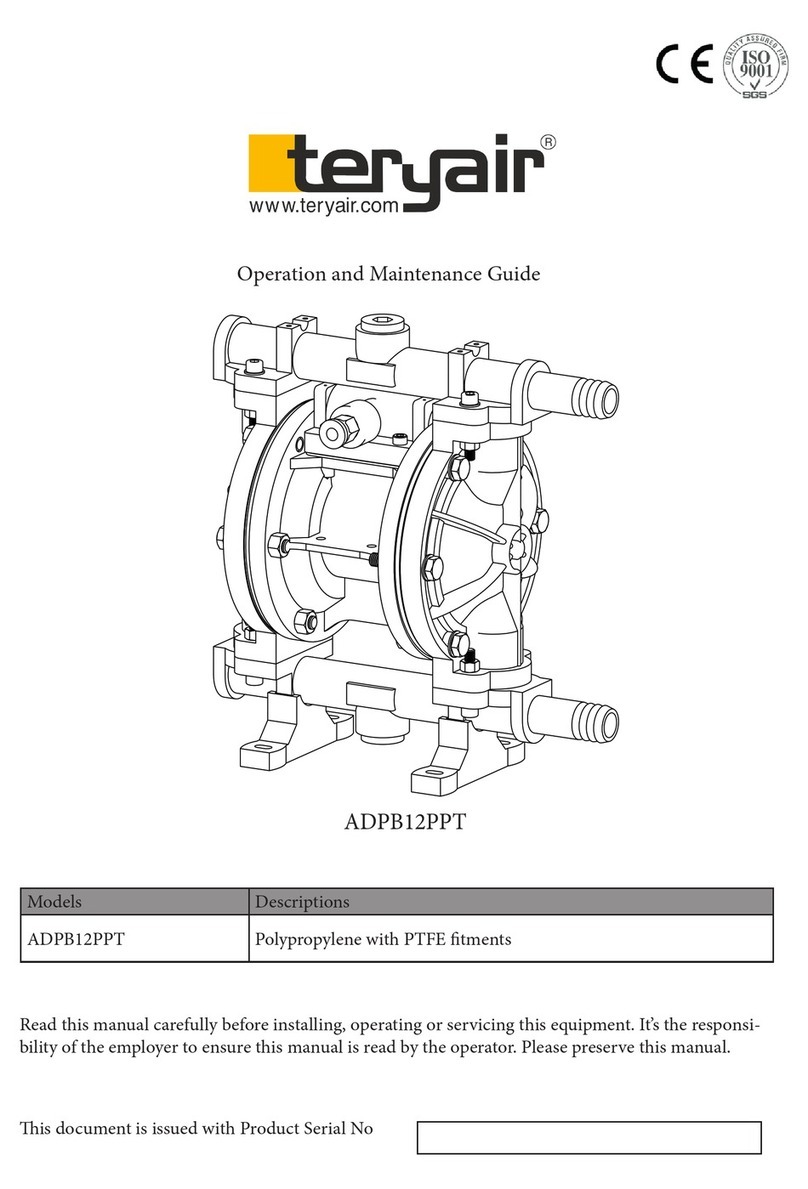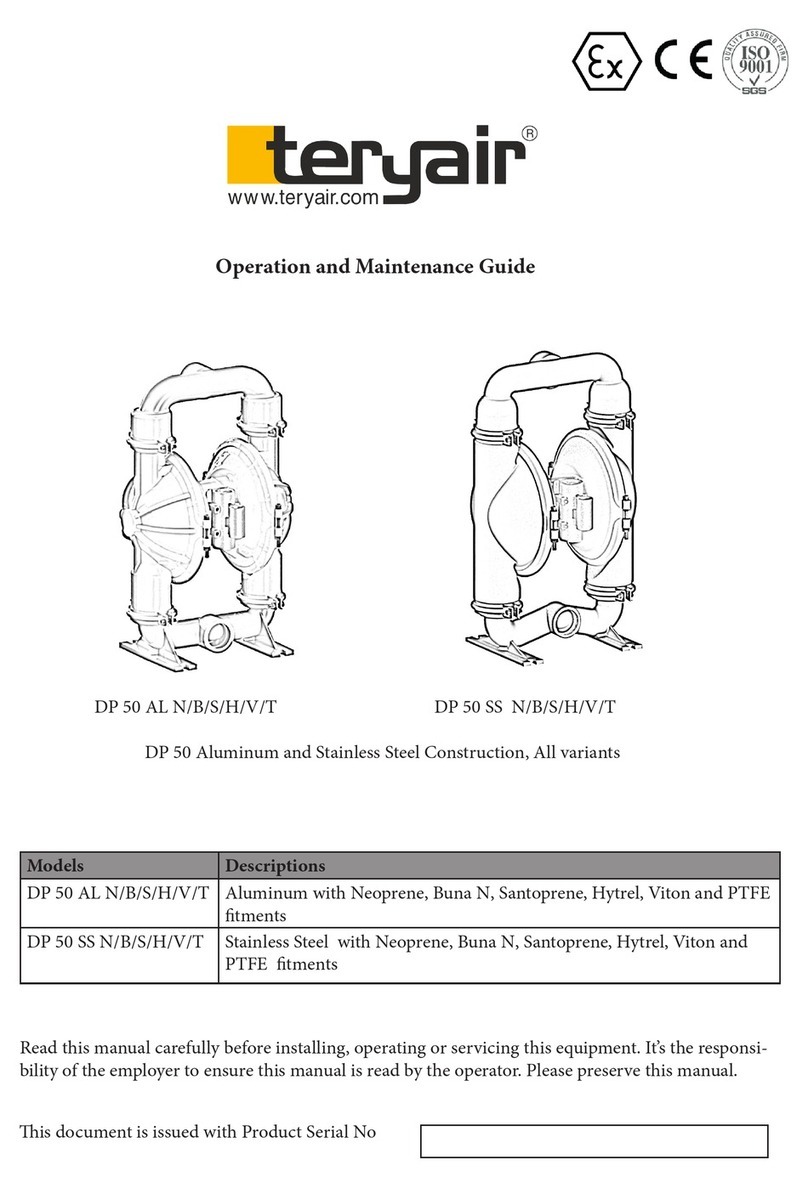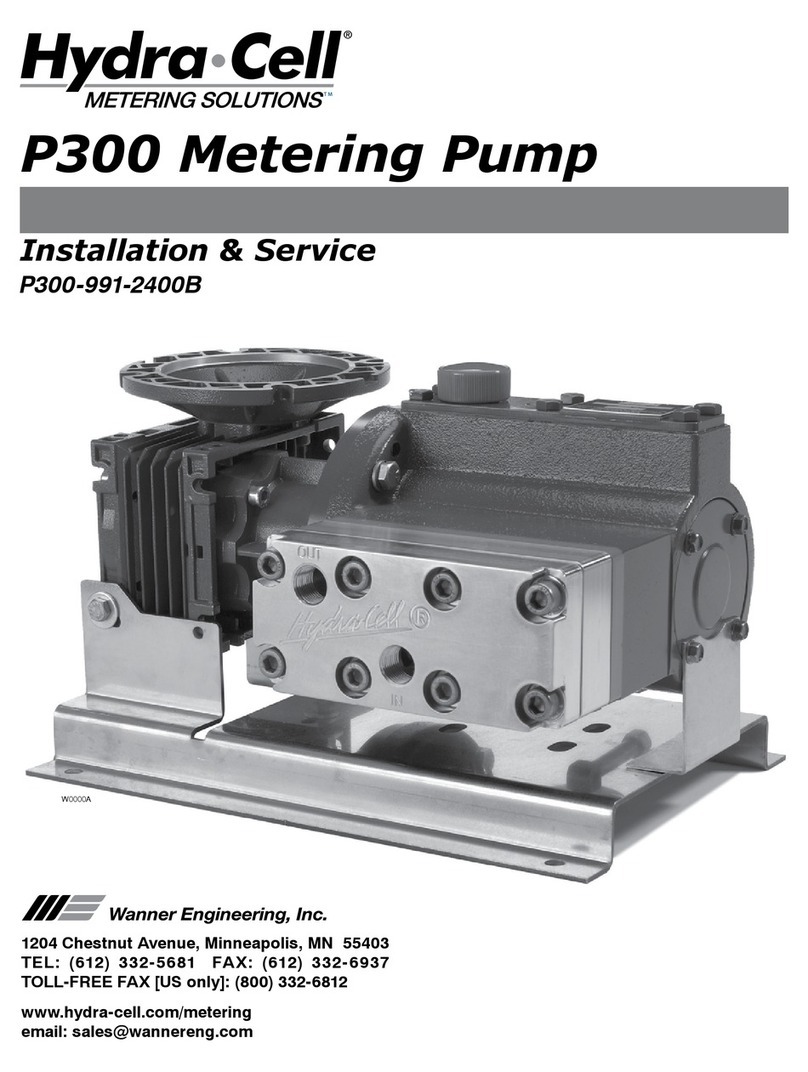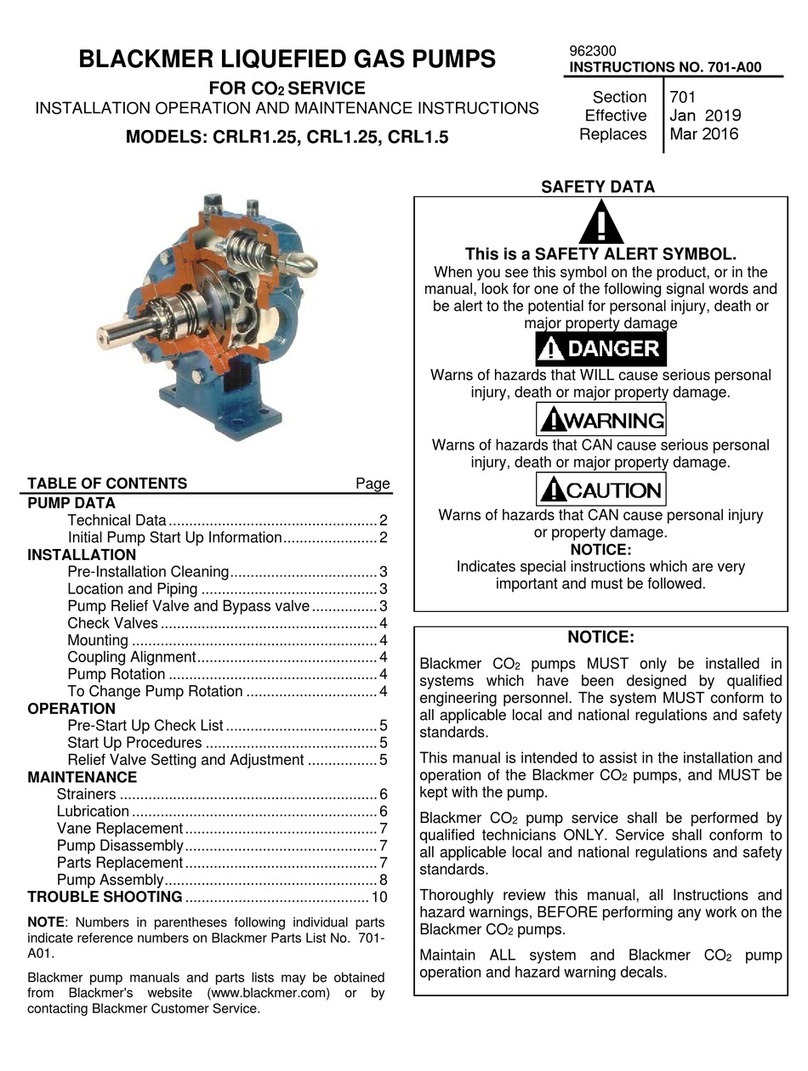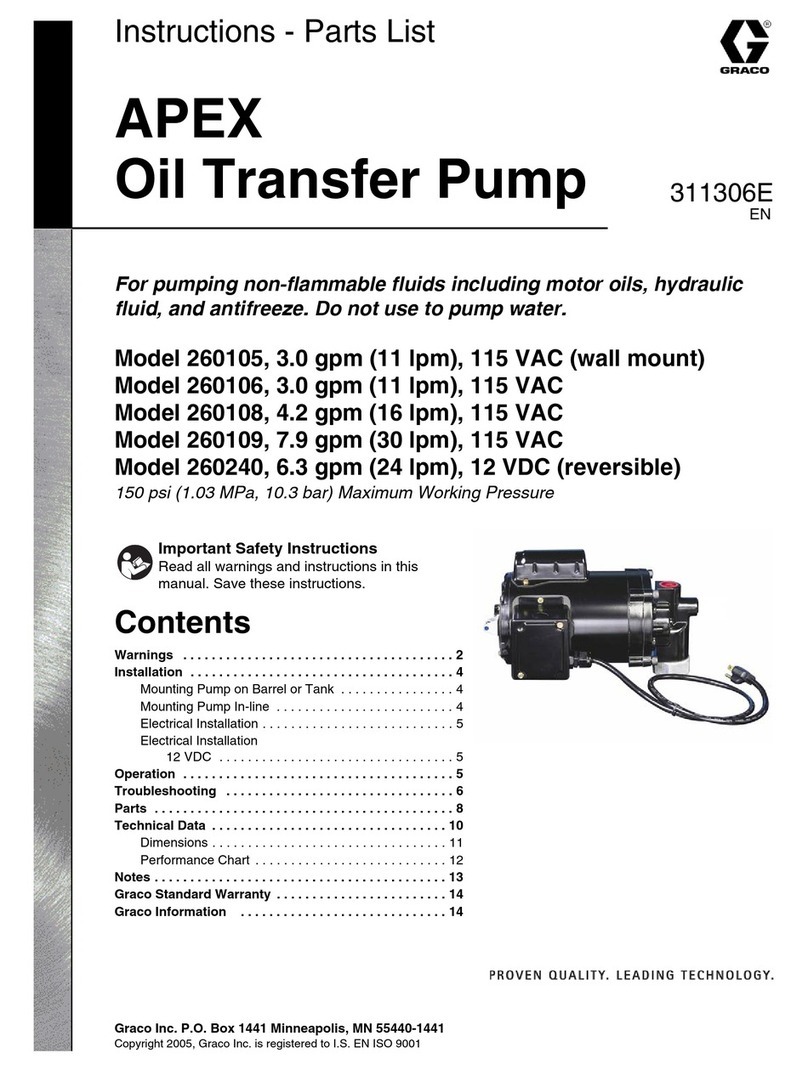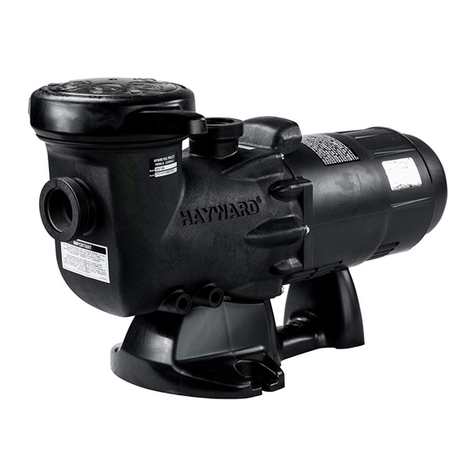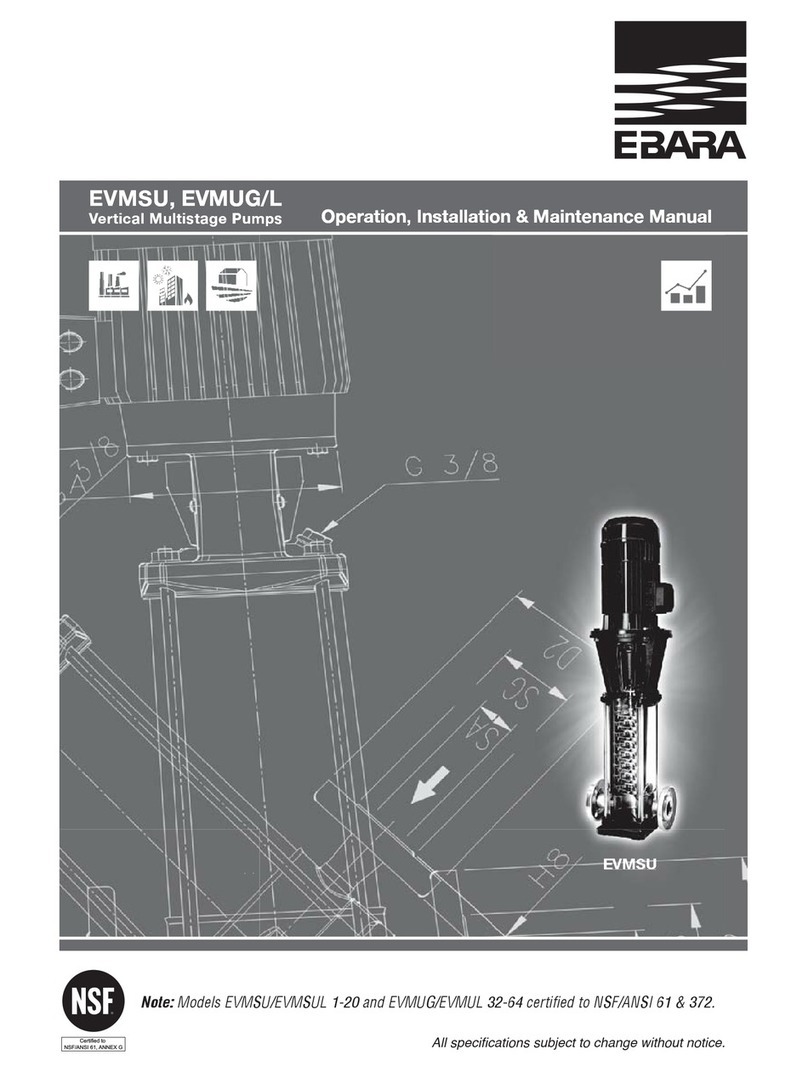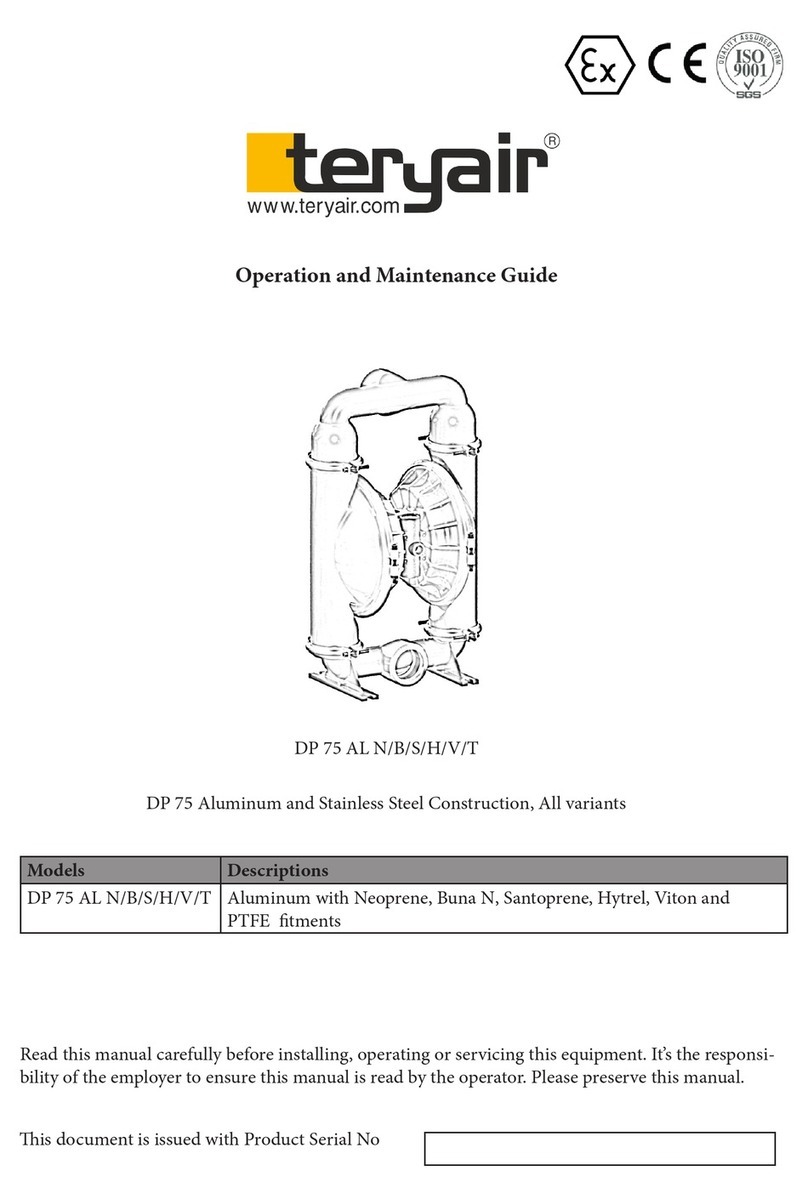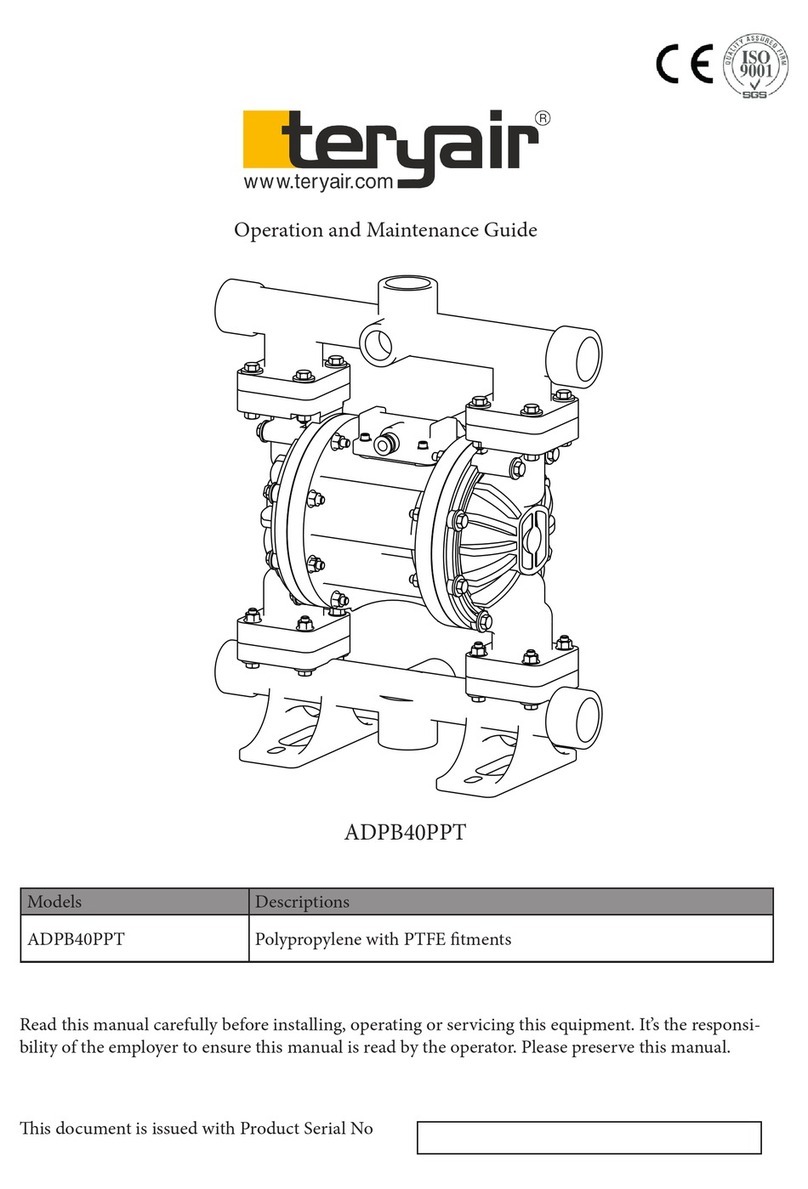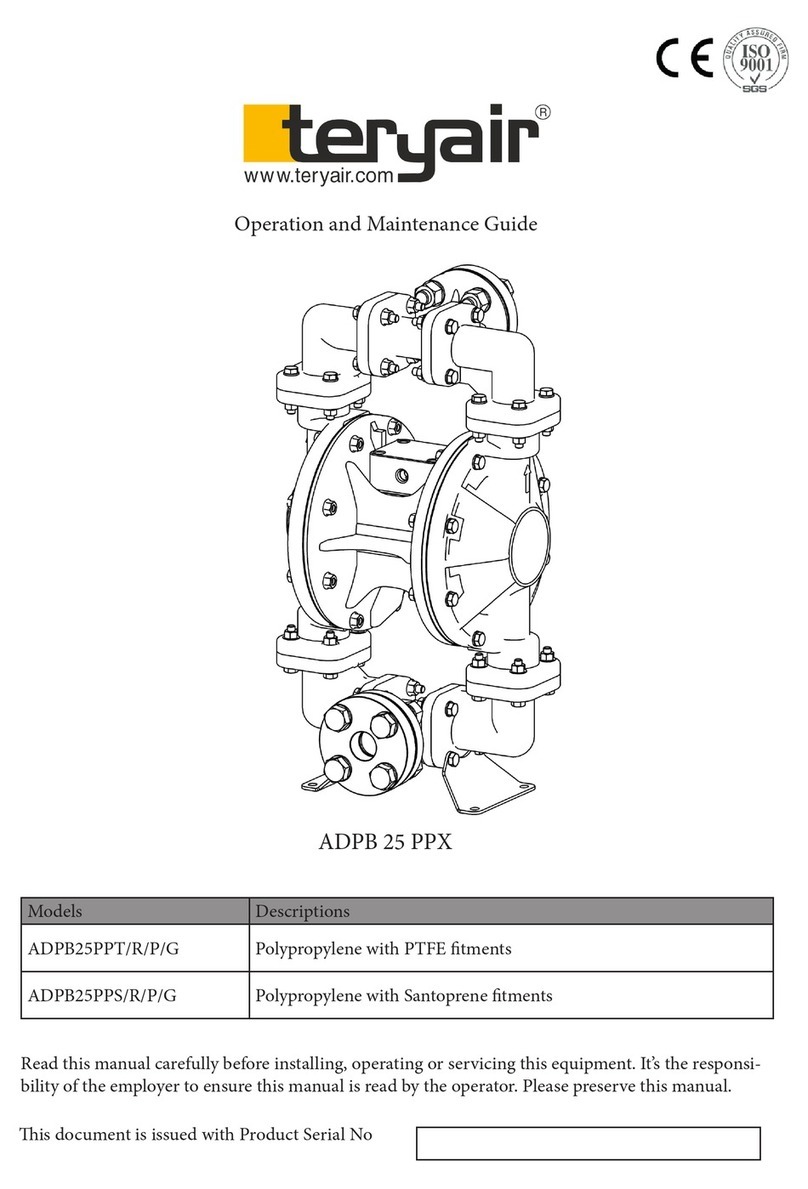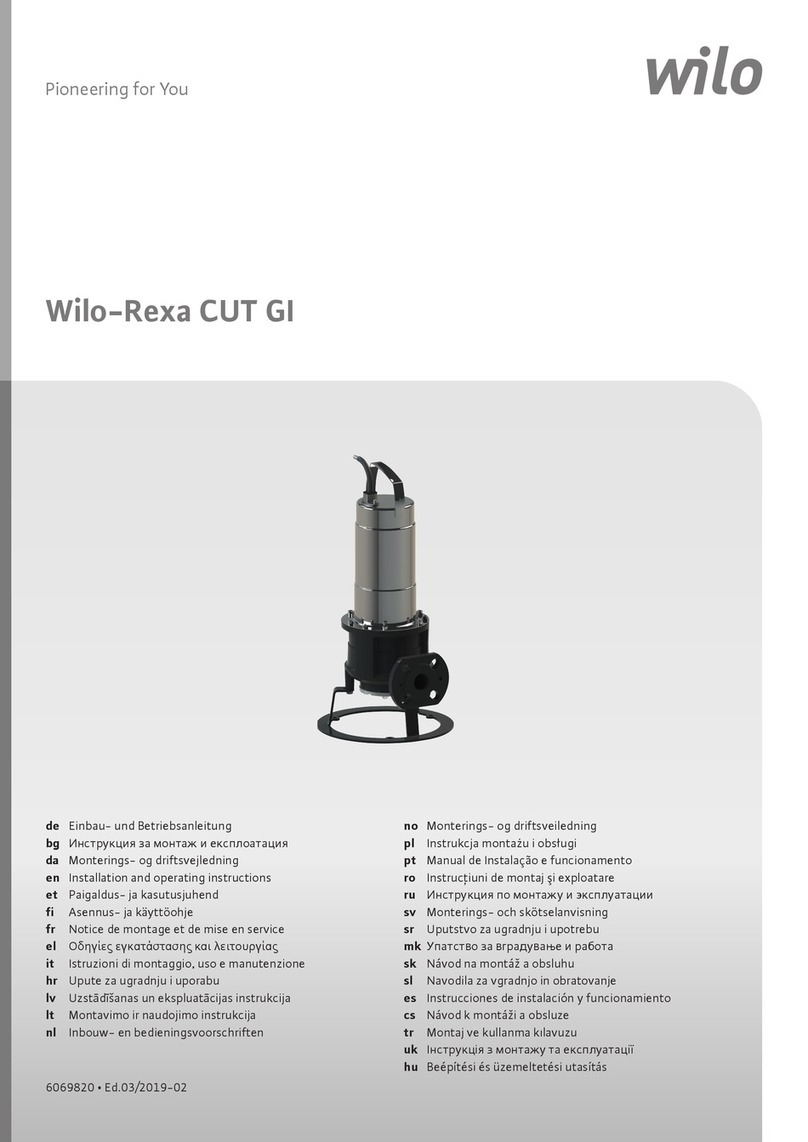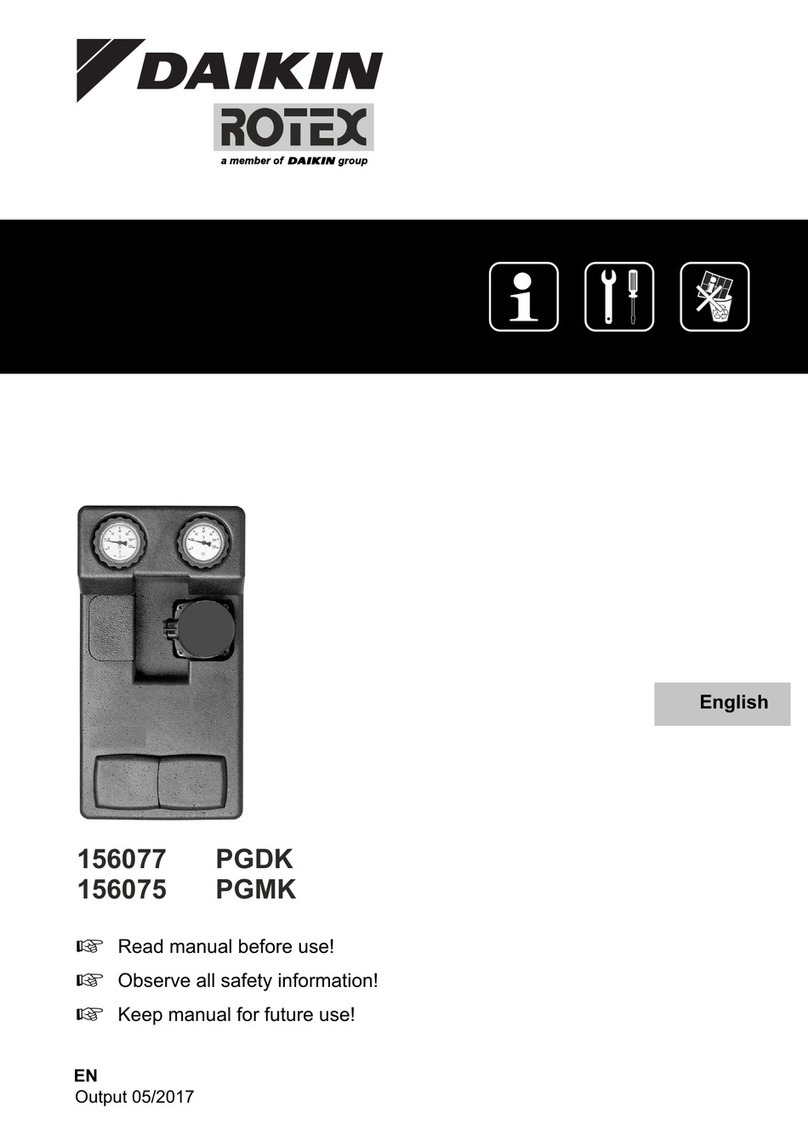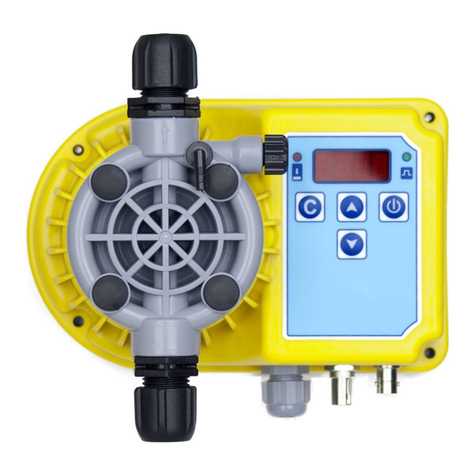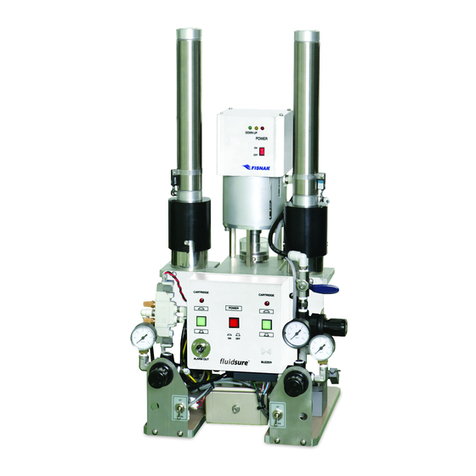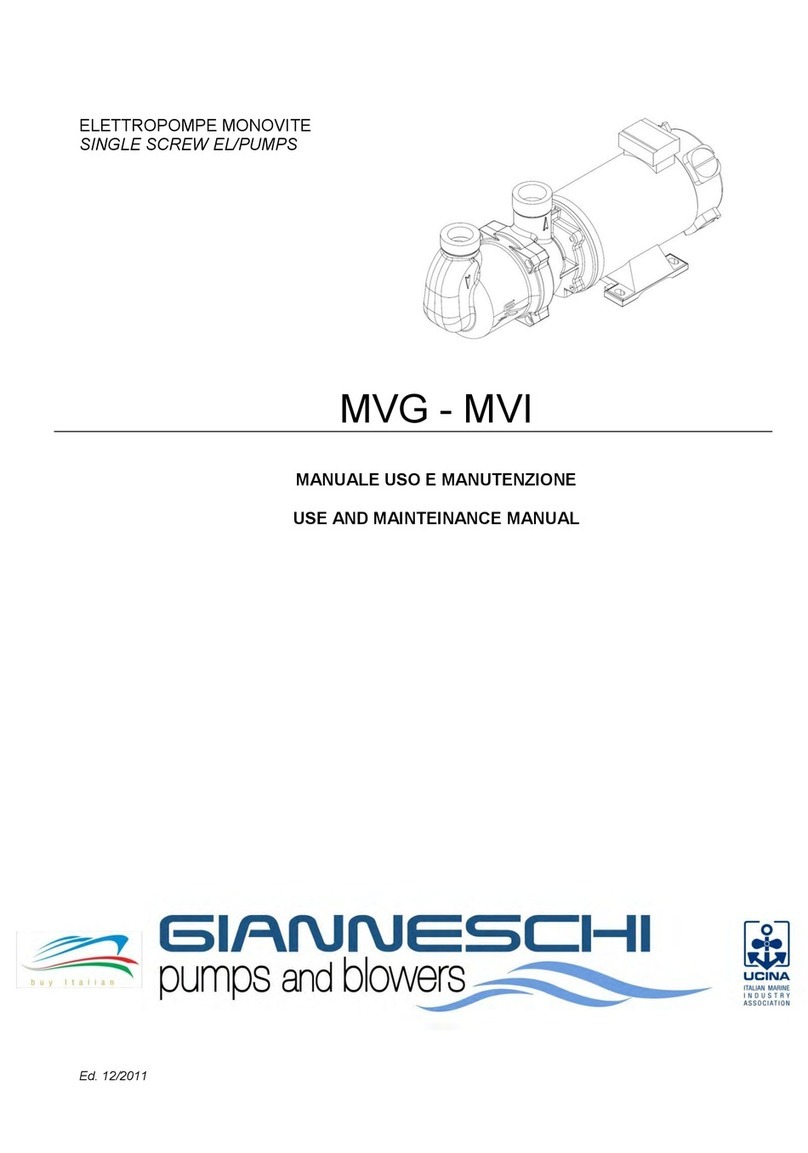Warning. Static Electricity
Static sparks can cause explosion resulting in
severe injury or death.
Ground the pump and the pump connections like
hoses and containers into which or from the fluid is
being transferred. Connect the grounding wire to
any bolt on the pump.
Check continuity of electrical path to ground at
regular intervals.
Consult local building and electrical codes for
grounding requirements where needed.
Use hoses containing a grounding wire.
Warning: Pump Exhaust
In case of a diaphragm failure, fluid being pumped
may spray out from the exhaust of the pump. This
may cause severe injury depending on the fluid
being pumped.
If the fluid is hazardous, pipe away the exhaust to a
safe remote location using a generous diameter ¾”
pipe preferably with a grounding arrangement, and
refit the muffler at the end of this arrangement.
Always wear safety glasses while in the vicinity of
an operating pump.
Warning: Overpressure/Hazardous
Pressure
Do not exceed the max supply air pressure of 125
PSI.
Make sure all connected hoses and pipelines are
rated to operate safely with the pressures generated
by pump of 125 PSI.
Do not open or handle pump or hoses while
pressurized.
Disconnect air supply line and relieve pressure from
the system by carefully opening discharge and
supply lines.
Warning: Hazardous Materials
Do not move a pump that contains hazardous fluids
trapped inside it. Please observe prescribed
handling and safety codes. Drain the pump safely,
by turning it upside down and collecting the fluid
safely, before moving the pump.
Warning: Explosion
Please check compatibility of fluids intended to be
handled with the materials of construction of the
pump. Severe reactions and explosions may occur
if materials are incompatible.
Caution: Chemical Compatibility
Please check that the fluid being pumped is
compatible with the wetted parts of the pump. Refer
Cole Parmer compatibility
(http://www.coleparmer.in/Chemical-Resistance)
guide for details. Note that chemical compatibility
may change with temperature; take this into account
while selecting pump material.
Caution: Structural Support
Please refer figure 1 and ensure that the piping
system is independently supported and does not
load the pump. The pump is not designed to take
the continuous and often pulsating load of a piping
system. Important to use a flexible connection
between rigid piping and pump casings.
Caution: Running dry, disconnection of
hoses when not in use for long periods.
Although these pumps can be run dry for long
periods, it is advisable to avoid this as it causes
unnecessary wear of wearing parts.
Caution: Tightening Torques and timely
re checking
Outer flange to Shaft 88Nm
Bolt for Outer Chamber and air disc 41Nm
Bolt for Inlet and Outlet 41Nm
Air Valve Body to Housing 3.5Nm
Caution: Operator Understanding
Please ensure that all operators have read this
manual and have the required understanding of
safe working practices and are equipped with safety
equipment when working on/around the pump.
Caution: Using genuine Teryair parts
and fitting as instructed
Use genuine Teryair parts to ensure correct pump
operation and maximize life.











